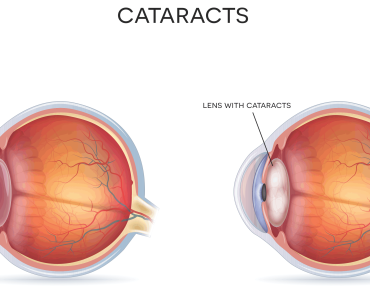Gout is a form of arthritis characterized by sudden and severe attacks of pain, redness, swelling, and tenderness in the joints, most commonly affecting the big toe. This condition is caused by the accumulation of urate crystals in the joints, leading to inflammation and intense discomfort. In this article, we explore the symptoms and underlying causes of gout to shed light on this painful and often misunderstood condition.
Symptoms of Gout:
The hallmark symptom of gout is the sudden onset of intense pain, typically occurring in one joint, although multiple joints may be affected in some cases. Common symptoms of gout include:
- Severe Joint Pain: attacks are characterized by excruciating pain, often described as throbbing or stabbing, which can make it difficult to walk or bear weight on the affected joint.
- Swelling and Redness: The affected joint may become swollen, tender, and inflamed, with the skin appearing red and shiny over the affected area.
- Warmth to the Touch: The joint may feel warm or hot to the touch, indicating inflammation and increased blood flow to the area.
- Limited Range of Motion: attacks can restrict movement in the affected joint due to pain and swelling, leading to decreased flexibility and mobility.
- Recurrent Attacks: typically occurs in flares or episodes, with symptoms subsiding after a few days to weeks before recurring. Without proper management, gout attacks may become more frequent and severe over time.
Causes of Gout:
Gout develops as a result of elevated levels of uric acid in the blood, a condition known as hyperuricemia. Uric acid is a waste product produced during the breakdown of purines, substances found naturally in the body and certain foods. When uric acid levels exceed the body’s ability to eliminate it through urine, it can accumulate and form needle-like crystals in the joints, triggering gout attacks.
Several factors can contribute to the development of hyperuricemia and gout, including:
- Dietary Habits: Consuming purine-rich foods, such as red meat, organ meats, shellfish, and certain alcoholic beverages (particularly beer), can increase uric acid levels and predispose individuals to gout.
- Obesity: Excess body weight is associated with higher uric acid levels and an increased risk of developing gout.
- Genetics: A family history of gout or inherited disorders that affect uric acid metabolism can increase the likelihood of developing the condition.
- Medical Conditions: Certain medical conditions, including kidney disease, hypertension, diabetes, and metabolic syndrome, can contribute to the development of hyperuricemia and gout.
- Medications: Some medications, such as diuretics (water pills), aspirin, and certain immunosuppressants, can interfere with uric acid metabolism and increase the risk of gout.
What are the 10 foods that trigger gout?
Certain foods high in purines can exacerbate gout symptoms by increasing uric acid levels in the body. The 10 foods that are commonly associated with triggering gout attacks include:
- Organ Meats: Liver, kidneys, and other organ meats are particularly high in purines and can significantly elevate uric acid levels.
- Red Meat: Beef, lamb, and pork contain moderate to high levels of purines, making them potential triggers for attacks.
- Shellfish: Shellfish such as shrimp, crab, lobster, and mussels are rich in purines and may contribute to flares.
- Alcohol: Beer, especially, but also wine and liquor, can increase uric acid production and decrease its excretion, leading to attacks.
- Sugary Beverages: High-fructose corn syrup found in sugary sodas and fruit juices can raise uric acid levels and exacerbate symptoms.
- Processed Foods: Processed foods like fast food, packaged snacks, and processed meats often contain additives and preservatives that may trigger attacks.
- Sugary Treats: Cakes, cookies, pastries, and other sugary treats can contribute to flares due to their high sugar content.
- High-Fat Dairy Products: While dairy products are generally low in purines, high-fat varieties like full-fat cheese and ice cream may increase the risk of gout attacks.
- Asparagus: Although not as high in purines as other foods on this list, some individuals with gout may find that asparagus triggers their symptoms.
- Certain Vegetables: While most vegetables are low in purines, some exceptions include spinach, cauliflower, and mushrooms, which may exacerbate symptoms in some individuals.
What causes gout?
Gout is primarily caused by the buildup of uric acid crystals in the joints, leading to inflammation and pain. Factors that contribute to the development of gout include:
- Hyperuricemia: Elevated levels of uric acid in the blood, resulting from overproduction or decreased excretion of uric acid by the kidneys.
- Dietary Habits: Consuming foods high in purines, such as organ meats, red meat, shellfish, and sugary beverages, can increase uric acid levels and trigger gout attacks.
- Obesity: Excess body weight is associated with higher uric acid levels and an increased risk of developing gout.
- Genetics: Family history of gout or inherited disorders affecting uric acid metabolism can predispose individuals to the condition.
- Medical Conditions: Certain medical conditions like kidney disease, hypertension, diabetes, and metabolic syndrome can contribute to hyperuricemia and gout.
- Medications: Some medications, including diuretics, aspirin, and immunosuppressants, can interfere with uric acid metabolism and increase the risk of gout.
What is the fastest way to flush gout?
While there is no “fast” way to flush out gout completely, several strategies can help alleviate symptoms and reduce uric acid levels during a flare:
- Stay Hydrated: Drink plenty of water to help flush out uric acid from the body and prevent dehydration, which can exacerbate symptoms.
- Take NSAIDs: Nonsteroidal anti-inflammatory drugs (NSAIDs) like ibuprofen or naproxen can help reduce inflammation and alleviate pain during attacks.
- Apply Ice Packs: Applying ice packs to the affected joint can help numb the area and reduce swelling and discomfort.
- Elevate the Affected Joint: Elevating the affected joint above heart level can help reduce swelling and improve circulation.
- Avoid Trigger Foods: Limit intake of foods high in purines, alcohol, and sugary beverages that can exacerbate gout symptoms.
- Consider Medications: Your doctor may prescribe medications such as colchicine or corticosteroids to help manage acute gout attacks and reduce inflammation.
Does gout go away on its own?
Gout flares typically do not resolve on their own without treatment. While symptoms may subside spontaneously after a few days to weeks, untreated gout can lead to recurrent attacks and long-term joint damage. It is essential to seek medical attention for gout symptoms to receive appropriate treatment and management strategies to prevent future flares and complications. With proper management, including lifestyle modifications and medication, individuals with gout can effectively control their symptoms and improve their quality of life.
How to Prevent Gout?
Gout, characterized by sudden and severe joint pain, often strikes like a thief in the night. While medication plays a crucial role in managing gout, focusing on preventive measures can significantly reduce the frequency and intensity of gout attacks. Here’s a breakdown of key lifestyle strategies to keep gout at bay:
Diet:
- Limit Purine-Rich Foods: Purines are broken down by the body into uric acid, and high levels can trigger gout attacks. Restrict red meat, organ meats (liver, kidney), and some seafood (anchovies, sardines).
- Focus on Plant-Based Options: Fruits, vegetables, and whole grains are generally low in purines and offer essential nutrients.
- Watch Out for Added Sugars: Sugary drinks and processed foods can elevate uric acid levels. Opt for natural sweeteners and water consumption.
- Maintain a Healthy Weight: Obesity is a risk factor for gout. Aim for a healthy weight through balanced diet and exercise.
Hydration:
- Drink Plenty of Water: Staying hydrated helps your body efficiently flush out uric acid, reducing its buildup and potential for crystal formation in joints.
Alcohol Consumption:
- Limit Alcohol Intake: Alcohol, particularly beer and liquor, can significantly increase uric acid levels and trigger gout attacks. Moderation or abstinence is ideal.
Coffee Consumption:
- Coffee May Offer Benefits: Studies suggest moderate coffee consumption might have a protective effect against gout. However, consult your doctor for personalized advice.
Stress Management:
- Reduce Stress Levels: Chronic stress can exacerbate symptoms. Relaxation techniques like yoga or meditation may be beneficial.
Maintaining Healthy Habits:
- Regular Exercise: Aim for moderate-intensity exercise most days of the week. Exercise promotes weight management and overall well-being.
- Regular Checkups: Schedule regular visits with your doctor to monitor uric acid levels and adjust treatment plans as needed.
Additional Tips:
- Maintain a Healthy Sleep Schedule: Adequate sleep is crucial for overall health and may indirectly influence gout management.
- Identify and Avoid Triggers: Certain foods or medications can trigger gout attacks in some individuals. Keeping a record of your diet and discussing potential triggers with your doctor can be helpful.
Remember:
While these lifestyle changes are essential for gout management, they may not replace medication entirely. Consult your doctor to develop a personalized gout management plan that combines preventive measures with appropriate medication if needed. By taking a proactive approach, you can significantly reduce the impact of gout on your life.
Conclusion:
Gout is a painful and potentially debilitating form of arthritis caused by the accumulation of urate crystals in the joints. Recognizing the symptoms of gout, including sudden onset of severe joint pain, swelling, and redness, is crucial for early diagnosis and treatment. By understanding the underlying causes of gout, individuals can take proactive steps to manage the condition effectively, reduce the frequency and severity of gout attacks, and improve their overall quality of life. If you suspect you may have gout or are experiencing symptoms suggestive of the condition, consult a healthcare professional for evaluation and personalized management.






